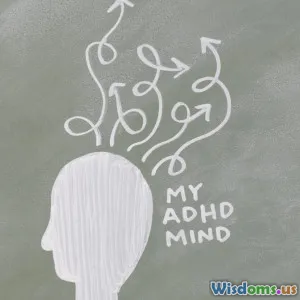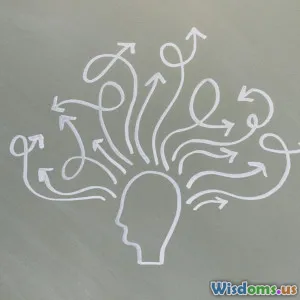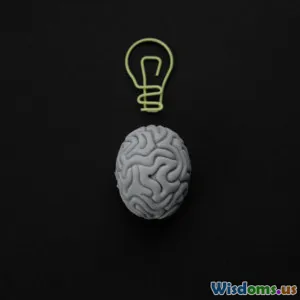
Dreams: A Window into the Mind
7 min read Explore how dreams unlock the complexities of the mind, revealing insights into brain function and human psychology. (0 Reviews)
Dreams: A Window into the Mind
Introduction
Have you ever woken up from a vivid dream and wondered what secrets your mind was trying to reveal? Dreams have fascinated humans for millennia, serving as mystical messages, inspiration, or simply puzzling night-time narratives. But modern brain science has transformed these mysterious nocturnal experiences into a subject of rigorous scientific inquiry. Today, scientists explore dreams not just as random images but as meaningful reflections of brain function, emotional processing, and psychological wellbeing. In this article, we delve into the intricate relationship between dreams and the mind, unearthing how dreams provide a unique lens on cognitive processes and mental health.
The Neuroscience of Dreaming
Understanding Sleep Stages and Dream Formation
Dreams are most strongly associated with the Rapid Eye Movement (REM) stage of sleep, a phase characterized by heightened brain activity similar to wakefulness. During REM sleep, brain areas such as the limbic system—responsible for emotion and memory—and the visual cortex become especially active. This explains why dreams often manifest as emotional and vivid visual experiences.
Studies using functional MRI (fMRI) have revealed that the prefrontal cortex—the region governing logical reasoning—tends to deactivate during REM, which may be why dream logic appears baffling or illogical. Dr. J. Allan Hobson, a pioneer in dream research, posited the "Activation-Synthesis Hypothesis," suggesting dreams arise as the brain attempts to synthesize random signals into coherent narratives.
Beyond REM: Dreams in Non-REM Sleep
Though REM dreams dominate popular understanding, research has shown that dreams can also occur during non-REM sleep stages, though often less vivid and more thought-like. Non-REM dreams may reflect more cognitive processing related to memory consolidation.
Functions of Dreams: More Than Mere Fantasies
Emotional Processing and Problem-Solving
Dreams serve a crucial role in emotional regulation. Psychologist Rosalind Cartwright's research highlights how dreaming can assist in problem-solving and processing emotional conflicts. For example, individuals who experienced intense stress often dream about related scenarios, which may help gradually integrate and manage emotional turmoil.
Memory Consolidation
Dreaming contributes to organizing and consolidating episodic memories. A landmark study published in the journal Science demonstrated that rats replay neural sequences in their dreams corresponding to maze navigation, reinforcing the link between dreams and memory processing in both animals and humans.
Creativity and Insight
Historically, many artists and scientists credit dreams with sparking innovations. The famed chemist August Kekulé discovered the ring structure of benzene after envisioning a snake biting its tail in a dream. Such stories illustrate the mind’s capacity to reorganize information innovatively during sleep.
Dreams as a Mirror of Mental Health
Nightmares and Psychological Disorders
While dreams can be enriching, frequent nightmares or nightmares related to trauma can signify underlying mental health conditions such as PTSD or anxiety disorders. The American Psychological Association emphasizes that nightmare frequency correlates strongly with emotional distress and may worsen sleep quality.
Lucid Dreaming and Therapeutic Potential
Lucid dreaming, where the dreamer becomes aware they are dreaming and can sometimes control the dream, presents potential therapeutic opportunities. Studies suggest that individuals with recurrent nightmares who learn lucid dreaming techniques report reduced nightmare severity and improved sleep quality.
Cultural and Psychological Perspectives
Beyond neuroscience, various cultures interpret dreams as spiritual or prophetic. Carl Jung, a towering figure in psychology, advocated that dreams connect us to the unconscious mind and collective archetypes. This psychological framing enriches our appreciation of dreams as meaningful narratives shaped by personal and universal symbols.
Conclusion
Dreams are far from mere mental static; they are a dynamic and vital experience illuminating the workings of the mind. By investigating dreams, neuroscience has uncovered valuable insights into brain functions such as emotional processing, memory consolidation, and creative problem-solving. Moreover, dreams can reflect psychological states, offering pathways for therapeutic intervention. Whether through the lens of science, philosophy, or personal exploration, dreams indeed serve as a profound window into the vast terrain of the human mind—a frontier we continue to explore with growing fascination and discovery.
References
- Hobson, J. A., & McCarley, R. W. (1977). The brain as a dream state generator: An activation-synthesis hypothesis of the dream process. American Journal of Psychiatry, 134(12), 1335-1348.
- Cartwright, R. D. (2010). The Twenty-four Hour Mind: The Role of Sleep and Dreaming in Our Emotional Lives. Oxford University Press.
- Stickgold, R. (2005). Sleep-dependent memory consolidation. Nature, 437(7063), 1272-1278.
- American Psychological Association (2013). Diagnostic criteria for nightmares and related disorders.
- LaBerge, S. (1985). Lucid Dreaming: The Power of Being Awake and Aware in Your Dreams. Ballantine Books.
- Jung, C. G. (1964). Man and His Symbols. Doubleday.
This article aims to illuminate how dreams go beyond fleeting images to serve as a gateway into brain function, emotional health, and creative insight, inviting readers to engage in their own mind’s nocturnal journey.
Rate the Post
User Reviews
Popular Posts




















